I Heart… UFO: Enemy Unknown
by Mark R
“It is 1999 and Unidentified Flying Objects (UFOs) have started appearing with disturbing regularity in the night skies. Reports of violent human abductions and horrific experimentation struck terror into the hearts of millions. The mass public hysteria has only served to expose Earth’s impotence against a vastly superior technology. Many countries initially attempted to deal independently with the aliens. In August 1998, Japan established an anti-alien combat force; the Kiryu-Kai. Equipped with Japanese-made fighter aircraft, the Kiryu-Kai certainly looked like a powerful force. However, after 5 months of expensive operations they had yet to intercept their first UFO. The lesson was clear: this was a worldwide problem which could not be dealt with by individual countries. On December 11, 1998, representatives from the worlds most economically powerful countries gathered secretly in Geneva. After much debate, the decision was made to establish a covert independent body to combat, investigate and defeat the alien threat. This organization would be equipped with the world’s finest pilots, soldiers, scientists and engineers, working together as one multi-national force. This organization was named the Extraterrestrial Combat Unit.”
As a child growing up overlooking a golf course, I was blessed with very little in the way of light pollution and, naturally, became fascinated by the sinister beauty of the untainted night sky. Gazing up at all the shimmering pin pricks, I would often wonder whether any of them were inhabited and pondered the possibility that there could be another child from some distant race, gazing up at their own sky and wondering the same thing. This childish excitement has never left me and I still long for the day when us non-millionaires are afforded the priviledge and luxury of space travel, allowing me to turn my ponderings on their head and gaze curiously at my own planet from those dark, twisted confines of space… excitement combining with fear, knowing that outside my window lies nothing but death.
 As morbid as it sounds, the excitement is all encompassing and worth the risk to be able to internalise to the point where you are literally looking back on everything that you are, from a tiny porthole in the middle of nowhere. The same excitement always took over when I considered that life on other planets is more or less a certainty, yet whether such life exists in close enough proximity that we may look upon their faces within our own lifetime is another matter entirely. Even then, would they come in peace or announce themselves in a wave of ominous shadows and a flurry of plasma bolts as the propaganda-hungry Hollywood studios would have us believe? Regardless of the outcome, that child inside me still cries out for such life altering experiences; the thrill of no longer having to hope but knowing unequivocally that we are not all that is out there.
As morbid as it sounds, the excitement is all encompassing and worth the risk to be able to internalise to the point where you are literally looking back on everything that you are, from a tiny porthole in the middle of nowhere. The same excitement always took over when I considered that life on other planets is more or less a certainty, yet whether such life exists in close enough proximity that we may look upon their faces within our own lifetime is another matter entirely. Even then, would they come in peace or announce themselves in a wave of ominous shadows and a flurry of plasma bolts as the propaganda-hungry Hollywood studios would have us believe? Regardless of the outcome, that child inside me still cries out for such life altering experiences; the thrill of no longer having to hope but knowing unequivocally that we are not all that is out there.
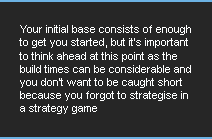 Games such as Space Invaders, Defender, Asteroids and the cult Astro Wars allowed my fascination with outer space, and any life therein, to cross over in to my love for video games but the premise was always the same: control a craft and stay alive at all costs. While this was still an extremely rewarding experience, and one which ate up a considerable number of time for someone of my young years, there was very little substance and certainly nothing which pulled me in to the point where the gameplay went beyond sprites on a screen.
Games such as Space Invaders, Defender, Asteroids and the cult Astro Wars allowed my fascination with outer space, and any life therein, to cross over in to my love for video games but the premise was always the same: control a craft and stay alive at all costs. While this was still an extremely rewarding experience, and one which ate up a considerable number of time for someone of my young years, there was very little substance and certainly nothing which pulled me in to the point where the gameplay went beyond sprites on a screen.
In 1994, however, everything changed. I was given a game consisting of two 3.5″ floppies, published by Microprose and with a cover featuring a rather vile looking insectoid creature bearing down on a gun-wielding marine, but this game was different from all the others before it; this was a strategy game with the tagline of “Command Earth’s forces against the alien terror”. My twenty two year old eyes lit up and my stomach flipped over like I was that young child again finding out about aliens for the first time but, being some thirty miles from home at the time and with still a few hours left before I could actually head for home, this shiny box taunted and mocked me, knowing that there was nothing I could do. Instead I found myself repeatedly gazing at the back of the box, reading the same synopsis over and over again, taking in the various shots of the combat areas and the research screens as I yearned to be in front of my machine, loading up this incredible looking game for the first time.
My anticipation and excitement culminated when, after the first diskette slid into the drive and the game began to install, I was treated to what I can only describe as an over the top, kitsch animation with a 1980s electropop soundtrack keeping pace. The animation itself had the typical anime stylings of slow, diagonally moving, characters with white streaks of rain moving rapidly towards them from the opposite diagonal and some extreme close ups on facial expressions. I remember finding it funny, almost nauseating in its odd approach, yet unquestionably rewarding at the same time because it DID have a sense of urgency and served as a teaser for what was to come next.
The game itself started by placing you in the position of immediate authority whereby YOU had to choose where your first base should be built, doing so by rotating and zooming in and out of a 3D representation of Earth in the Geoscape. Being something of a UFO freak as a child, I immediately sought out Nevada and went about building my first ever base of operations in UFO: Enemy Unknown… Groom Lake. As much as I wanted to call it Area 51, I was no longer that child fascinated by the thought of reverse engineering downed crafts from outer space, and the prospect that the alien hybrid conspiracies may be real, and so I still doffed my cap to Area 51 but on a more adult level. Sorry Mulder, but sometimes you just have to let go a little.
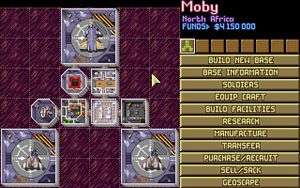 Your initial base consists of enough to get you started, should a stray craft find itself in close enough proximity to trigger your radar, but it’s important to think ahead at this point as the build times can be considerable and you don’t want to be caught short because you forgot to strategise in a strategy game! Along with the mandatory Access Lift (as we haven’t yet evolved as a race to where we can teleport, and are far too lazy to take the stairs), your base starts off with three Hangars containing the basic Skyranger transporter along with two Interceptor crafts so you’re already fully equipped to take down a small UFO and deploy a team to the recovery site.
Your initial base consists of enough to get you started, should a stray craft find itself in close enough proximity to trigger your radar, but it’s important to think ahead at this point as the build times can be considerable and you don’t want to be caught short because you forgot to strategise in a strategy game! Along with the mandatory Access Lift (as we haven’t yet evolved as a race to where we can teleport, and are far too lazy to take the stairs), your base starts off with three Hangars containing the basic Skyranger transporter along with two Interceptor crafts so you’re already fully equipped to take down a small UFO and deploy a team to the recovery site.
The Living Quarters provide accommodation for your soldiers, scientists and engineers while the General Stores provides storage for up to fifty units of weaponry, armour or alien artefacts and the Small Radar System allows for alien crafts to be picked up as long as they pass close enough to your base. The final two buildings in the starter base are perhaps the most important of all: the Laboratory where all of your scientists research new technologies as well as alien tech and the alien beings themselves while the Workshop serves as a manufacturing facility where you can build any pre-researched technologies such as the boring Medi-Kit through to the most advanced UFO crafts and craft weaponry.
One of the first things I noticed in my “Build Facilities” menu was that there was an “Alien Containment” facility available and, without hesitation, I made sure that this was the first facility to be added to the base. Forget spending twenty five days building the Large Radar System or sixteen days on the Missile Defences… where’s the fun in being able to send your troops further afield or stave off attacks from alien crafts when you could have your very own LIVE alien containment facility built in only eighteen days! In just over two weeks of in-game time, your run of the mill (ish) military base could be a pixelated answer to Area 51 and so my heart fluttered as I added the Alien Containment to my build queue… along with the Large Radar System and Missile Defences… hey, if you’ve got the money and the available space then you should build it. Who am I to argue?

Looks like we're doing ok for now, let's hope it lasts, but that additional $472k won't go very far!
Your progress in the game depends on your ability to sustain relationships with participating nations of X-Com, and your progress is rewarded by payment from each of the countries involved based on how much you have aided and protected them during the previous twelve months. As you’d expect, having a single base to start off with means that you can’t possibly cover as much of the planet as you, or X-Com, would like and so there will be times when particular nations decide to reduce their funding which, in turn, means that you have less to spend on the upkeep of your base as well as research and development. If you’re unable to impress them in future months, the result will be that you lose funding from them altogether and they are likely to sign a pact with the alien races.
Revenue streams can easily be managed by selling off any alien artefects that you manage to salvage along the way, such as the UFO Power Sources which sell for $250,000 and the Heavy Plasma which sell at over $170,000 per unit. If you have Elerium 115 and Alien Alloys in abundance, which is entirely possible at certain stages of the game, it’s good practice to use your manufacturing facilities to actually produce these items at a lower cost and sell them on at the regular market value, thereby sustaining your revenue stream even after numerous countries have pulled out and signed pacts with the aliens. It is this constant management of the funds and internal progress which helps to set UFO: Enemy Unknown apart from other similar turn based combat games as the level of statistical control and financial manipulation mean that you can’t take your eye off the ball and concentrate on combat alone, or you won’t be able to control the alien threat and you will fail. Game over.
Before you actually embark on any missions your soldiers will have only minimal experience in the field and, as a result, their skills and available time units will be mediocre, to say the least. You do, however, have the choice of immediately recruiting more soldiers in the hope that some of them will arrive with higher stats than those already on the base. The statistics offered by your units are Time Units, Stamina, Health, Bravery, Reactions, Firing Accuracy, Throwing Accuracy and Strength although I can’t say I’ve ever paid too much attention to the Reactions statistics for any of my squad. With weapons varying in weight from light (basic Pistols) to heavy (Heavy Cannons) and varying in how many time units are required to fire off the different shots, it’s unrealistic to place heavy weaponry in the hands of a unit with low strength and/or time units. While many people will take UFO: Enemy Unknown at face value and simply distribute balanced weaponry across the board without paying heed to whether or not it’s beneficial to the overall capabilities of the squad, I’ve always taken time out to explore the qualities of each individual crew member and manage them accordingly. This is, after all, a strategy game and not a simple combat game.
Perhaps one of the reasons I still hold UFO: Enemy Unknown in such high esteem sixteen years after its release is that it did something that no other alien game, to my knowledge, had done before… it existed without putting you in control of the typical Hollywood style action hero god of war, running ahead with his cannons on auto-fire and rugged bullet-deflecting skin. Instead you are a silent overseer, controlling every move of your squad from whether they squat out of view in order to gain a cleaner shot at the enemy on the next turn, or take a chance and use all available time units to continue firing at the enemy in the hope that one round my be the killshot. This manoeuvre, whilst potentially triumphant, is also placing them in mortal danger should they be left standing with no time units left to take cover after each round has been fired and their prey is left standing, ready to use their advanced weaponry against your brave soldier on the next move.
 It is this turn-based battle system which intrigued me more than anything. Not being one to ever partake in a nice game of chess (or Global Thermonuclear War, for that matter), I wasn’t really versed in gameplay involving thinking several moves ahead of the opposition but my own personality is such that it all fell into place very quickly and was very natural to me. If anything, it’s perhaps the one thing I miss most with the current generation of video games in that everything is very much real time combat where it’s more about reflexes and reactions than forward thinking and strategising.
It is this turn-based battle system which intrigued me more than anything. Not being one to ever partake in a nice game of chess (or Global Thermonuclear War, for that matter), I wasn’t really versed in gameplay involving thinking several moves ahead of the opposition but my own personality is such that it all fell into place very quickly and was very natural to me. If anything, it’s perhaps the one thing I miss most with the current generation of video games in that everything is very much real time combat where it’s more about reflexes and reactions than forward thinking and strategising.
Even with the base management side of things, everything has to be done well in advance where you see that you may have only four or five places left in the Living Quarters but one of the neighbouring countries to you has just signed a pact with the alien race which means you’re likely to encounter an increased number of sightings around your base. This means you’re likely to need more soldiers in a short space of time, but you only have room for a few and so you need to be quick and start building more Living Quarters, start manufacturing more weaponry as well as build additional General Stores to house all this new weaponry otherwise your on-base units won’t be able to defend themselves against alien infiltration. The pact also means that it is more likely for an alien base to be in your vicinity which, in turn, means that the UFOs overhead will generally be Supply Ships on their way to the alien base with more weaponry and tech to aid in their attempts to overthrow earth OR, if you’re unlucky, the very large Battleships with between 15 and 28 aliens on board as well as the powerful Commanders. Great if you want to try and capture a live Commander, but there’s no point in even attempting such a craft unless you have enough power to first of all take it down and, even if you succeed in the first instance, you still need enough men with the most advanced alien tech in order to successfully complete the mission with minimal casualties and maximum reward. It is for this reason that you need to stay ahead of the game with enough Workshop space and Engineers to continue manufacturing armour, especially in the middle to latter stages of the game as jumpsuits just don’t cut it against plasma bolts, and enough Scientists and Laboratory space on hand to deal with the research necessary to further your progress.
As far as weaponry is concerned, there is a very clear choice laid out before you at the beginning of the game… whether or not to stick with regular military style weapons which, as you’d expect, are not exactly fantastic when it comes to defeating the alien horde… or whether you assign your research and development staff to work on the readily available Laser Weapons. Perhaps I went about it all the wrong way but, on every playthrough beyond my first, I bypassed the laser technology entirely and settled for regular pistols and rifles while the missions got to the point where the salvaged alien artefacts were of the Plasma Rifle and Heavy Plasma variety as these are the most accurate and do the most damage. The downside to plasma weaponry is that it requires a considerable amount of the rare Elerium 115 material to manufacture the replacement ammo whereby the laser weaponry, as feeble as it is, has no need for ammunition whatsoever. Even with that knowledge, the futility of the laser weapons on my first playthrough put me off ever using again as the power was comparable to that of the earth-based military weaponry.
Beyond this, however, is a much larger quandary: whether to concentrate on your own locale and hope that you can maintain the support of the governing nations or expand to multiple bases, thereby reducing your budget for each individual base, and try to appease each country by monitoring their skies and gaining swift entry to any terror sites. If your base is on the west coast of the USA and a terror alert from Japan comes through, it’s possible that you could lose most of the civilian population before arriving at your destination, thereby negating your presence entirely. This sort of slow reaction time reduces your funding from that country and will therefore affect your overall progress, but spreading yourself too thinly by building multiple bases can also have a detrimental effect resulting in your inability to maintain each base. To this end, there must always be a perfect balance between keeping on top of the alien threat itself as well as maintaining a high level of research and discovery to keep the countries happy, whether that’s through protecting their people or showing that you’ve managed to learn enough about the alien race, through interrogating their live specimens, to sustain their funding.
 |
 |
 |
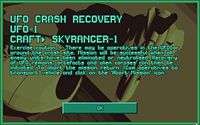 |
 |
 |
One thing that I always found particularly frustrating with UFO: Enemy Unknown in the later missions is the process of actively capturing live aliens. There may be times where you think you’ve killed an alien but, on the summary screen after the mission has ended, it turns out they were merely stunned and are therefore available for research and interrogation. When it comes to advancing your technology further at a progressive rate, however, the quickest way to do so is to seek out and capture live alien Commanders. These Commanders are available within the Sectoid, Snakeman, Floater, Muton and Ethereal races but they’re not the easiest guys to keep alive as the original Stun Rods require that you place your soldier in the next adjacent tile facing their foe while hitting them several times, usually with extreme futility. The alien Stun Bombs, assuming you’ve researched these, aren’t great as you need to be relatively accurate to take them down with the first hit and you could end up taking a number of your own men down at the same time if you’re not careful. I’ve never actually come across a Muton Commander in all my years of playing UFO and it wasn’t until today that I actually pondered the existence of these elusive creatures… and it turns out, according to Ufopaedia.org, that there is only ONE Muton Commander in the entire game and is easily distinguishable in that he is sporting a red uniform rather than green.
As the game itself progresses, so too do the alien races and their abilities. Creatures become more accurate with their shots, the number of killshots increases dramatically and we also have the introduction of the fantastic and innovative Psionics. As someone who had read so many books on the existence of Project MKUltra and the advanced manipulation of the mind through psionics, having a game which not only touched on this but allowed you to actively research the technology, set up a dedicated Psionics Laboratory and then train you soldiers to use psionic equipment, in the shape of the Psi-Amp, was the next best thing to being Uri “There Is No Spoon” Geller. While the game allows you to play with the Mind Probe without the prerequisite of a Psi-Lab or any Psionics training, the effects of the Mind Probe are pretty insignificant unless you want to see the rank of a particular enemy and hope that their morale was low enough to drive them into a panic attack which may result in them dropping their weapon and taking on the mannerisms of an escapee from an old folk’s home, or they may go berserk and start shooting within their own ranks. The Psi-Amp, on the other hand, is a particularly impressive piece of kit whereby any aliens within the line of sight of your selected unit can be taken over completely by the transmitting soldier and made to disarm, walk around to scout for other aliens or simply treat them like one of your own and command them to attack their own race. The Psi-Amps aren’t always successful, and depend on the ranking and morale of the receiving enemy so it’s more difficult to take over an Ethereal Commander, for example, than it is a Floater Soldier.
In terms of actual playability, UFO: Enemy Unknown is the only game that I have continually played since I first tried it in 1994. Other games and genres have come and gone over the years without a single backwards glance from me but UFO, as basic as it is and less than 3mb in total, is always the first thing that I install on any new laptop or PC. The difficulty of the missions is governed by maps which are individually terraformed prior to your initial engagement so, while you may encounter three or four terror missions based in Novosibirsk in a single game, each one will be entirely different… buildings will be in a different position, your landing area will be different, the building types will be different, the enemies will be a randomly selected race and the terrain itself will determine how you perform. A street scene, for example, will be much kinder to your soldiers’ Time Units because the terrain itself is always on a level plane therefore your soldiers will only use the standard four time units for each square of movement whereas going uphill on a grassy terrain will take considerably more time as it involves more health and strength.
By the same token, the random nature of each mission, whether it’s a UFO taken down by one of your own craft or a landing site where the aliens are scouting the area on foot, means that you can never predict the outcome or how difficult it may be. Even during the early stages of the game, should your craft land in an area which is relatively open, then you are likely going to lose half of your squad before they’ve even left the craft thanks to the game’s in-built field of vision combat technique. Even during your own turn, should you send soldiers blind into an area surrounded by aliens, they WILL be shot at before they are able to turn around and see their enemy… just as in real life. While this makes for some incredibly tactical gameplay, it does also mean that your first few attempts at a terror site or a landing spot could result in you losing most of your crew. The beauty of this style of randomly generated architecture is that it provides you with infinite possibilities and no room for complacency whatsoever but it also throws you in at the deep end with an incredibly steep learning curve.
Expanding further on this level of difficulty, the Sectoid and Ethereal races have a high degree of Psionics in their approach to combat so if your craft lands with the rear ramp open to a high ranking Sectoid or Ethereal with training in Psionics, you could easily be looking at four or five soldiers taken out as a result of one of your units being taken over and used as a tool to take out others in your squad. It’s hard to explain the level of enjoyment that this unknown quantity brings to the game, an excitement where each new mission is literally new ground and you never know which type of alien is going to appear where or how much damage they’ll be able to do to you before you even learn of their presence.
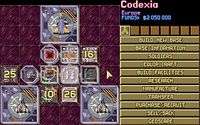 |
 |
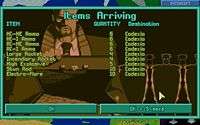 |
There are times during the gameplay where your heart sinks if, like me, you’ve taken the time to go through all of our available soldiers and give them more meaningful names than the default Sergei Voronin or Kevin Bryant and suddenly your favourite character Commander Ozzy Osbourne or Captain James T Kirk has been taken out by a stray round from a hidden Muton. The moment where the popup appears is one which is met with genuine dismay and a feeling of loss, especially if you’ve nurtured this particular character through dozens of missions and base infiltrations. Your only choice, to make up the numbers, is to recruit from the pool of soldiers once again and lo and behold, in comes yet another Sergei Voronin… a total newbie with less time units than a broken Swatch, no accuracy whatsoever and you can’t even bring yourself to rename him because you know, and will always know, that he is nothing more than a replacement unit… a redshirt, if you will… who is mocking you simply by being part of the squad.
It may sound ridiculous to the uninitiated but, believe me, when played properly and if you allow yourself to become fully immersed in the game… UFO: Enemy Unknown will not only swallow up months of your life while you build up the statistics of every character on your squad, from their strength right through to their Psionic abilities, so that when you finally do send them out on their final mission to overthrow the Master Brain in Cydonia you can kick some serious ass and make good all of the casualties of war along the way. All of the civilians that they dared to mutilate, drive insane and destroy will be avenged and every unit you ever lost during the war will have their name written in the history books forever so that their childrens’ children will know that they gave their life for them, unquestionably. This is, after all, our planet… and we’re not giving up without a fight.
Last five articles by Mark R
- From Acorns to Fish
- Alone In The Dark
- Why Borderlands is Better Than Borderlands 2
- Falling Short
- The Division: A Guide to Surviving the Dark Zone Solo














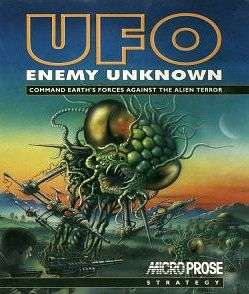


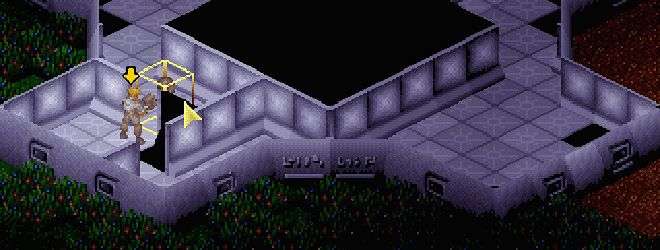


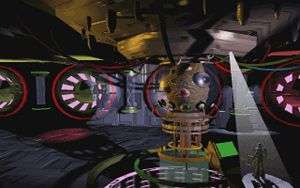





This is a great piece. The X-COM series is one that’s very dear to me, and UFO is also the first game I install on any new PC or laptop. I think you pretty well summed up what makes this game special, but it really does consistently blow me away after all these years that the deepest, most absorbing game I’ve ever played and ever expect to play comes on a mere two floppy disks… though after various patches are applied to make it run on modern systems the game’s size does become five times the original, about 15 megs. Even that is incredible, when look at the gigabytes involved in newer games that still don’t manage to out-do UFO.
It has management, strategy, turn-based tactical combat. It has aliens, nods to classic sci-fi tropes, and an at times wonderfully malicious sense of humour. It has the most unforgiving AI, and the greatest challenge of any strategy game I’ve played. And it can still make my spine turn to a column of ice by giving me a brief glimpse of a chryssalid as it devours one of my men, even after all this time.
This is the best game ever made. In my opinion. Of course.
Amazing piece!
Even though these sort of games don’t really do much for me (slow and methodical isn’t as much as my forte as I’d like) I was way too enveloped in this.
An incredible read
I never got onto UFO even though he made three of my fave games ever – Rebelstar 1 & 2 and Chaos.
I imagine I would have lost months to this fucker tho!
Months could easily be lost to the game although, in saying that, it’s also possible to complete it in a few days if you follow the correct research trail and head straight for Cydonia. Where’s the fun in that though? I tend to play it until I’ve researched everything that the game has to offer and got all base slots filled, with Avenger crafts in each base AND each soldier wearing the flying suits. My strategy later in the game is to use the Blaster Launcher to blow a hole in the top of the craft and send my men in from above to take everything out from the top, down. I also leave two men out front (or more, depending on how many doors there are) to cover the exits of the crafts.
There was so much more that I wanted to say about the game, but I held back as I touched on some other points with Julian Gollop himself and didn’t want to cover everything so that when the interview was published it had no content to go along with it.
Enjoyed this a lot. I’ve also played the game extensively and have great memories of being hunched over a laptop at 8am in the college cafeteria before work, playing, before grudgingly packing up and heading off. I never did make it to Cydonia, I never got to question a captured commander, however, the stun sticks were useless, so that is understandable. It was always heartbreaking though when you’d reach the top of a crashed UFO and then find the head honcho dead from gunfire/rocket explosions.
You’ve done justice to arguably my favourite game of all time.
My opinion of UFO is that it is a masterpiece, of any craft. An essentially flawless work of art; probably the only strategy video game I would elevate to such a pedestal.
Two things – I was the same on the laser weapons 15 years ago, but when I play it now I rely on them, along with the more powerful launchers. Now I do that, I can sell every plasma weapon and roll in the cash. Thinking about it though…….I could equip just one squad with heavy plasmas and flying suits. They could be my elites, the guys for Cydonia and the Commander captures. Hmmmm. But not for enemy bases. Those are bloodbaths.
The other thing – the Muton Commander. No.
I refuse.
Got to be a myth. I won’t have it. Those guys are oxen.
[...] there are two words guaranteed to get us excited and, quite honestly, salivating here at GLHQ, they are “XCOM” and [...]
[...] storage facilities to house any artefacts and recovered alien life forms, be they alive or dead. UFO: Enemy Unknown was a game which, some eighteen years after its release, was still one of the first things I [...]
[...] it’s no secret that our very own Editor-In-Chief, Mark, as well as our Editor, Lorna, are crazy fans of the original Microprose top-down strategy game UFO: Enemy Unknown. It will also come as no [...]